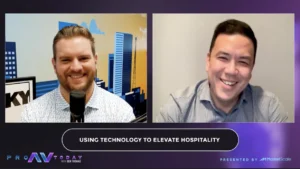Welcome to Artificial Intelligence, May I Take Your Order? How AI is Entering the Drive-Thru Process
The fast food industry in the United States is worth approximately $198.9 billion. Most of this large market is comprised of on-premises restaurants and drive-thrus, the latter of which has long been considered the crown jewel of the fast food experience. The drive-thru encapsulates everything people care about when it comes to fast-food—quick ordering, quick payments, all without ever leaving your car.
In 2017, QSR magazine issued a report finding average drive thru wait times for American fast food consumers rose to a peak of 226.3 seconds. As a result, Denver-based company Valyant found an Artificially Intelligent solution to speed up wait times and even help personalize the drive thru experience to unprecedented levels.
MarketScale caught up with CEO Rob Carpenter to learn more about their AI solutions and what this means for the future of fast food.
The product of over 18 months of development, Valyant developed a next-gen conversational AI platform integrated directly into the digital display/speaker boxes in drive-thrus. When someone pulls up to a drive-thru, the system is notified, and the conversational AI automatically greets the customer, carries on the conversation, takes the order, then pushes it through the POS system.
“The hope is this product provides a better experience for customers and employees,” said Carpenter. “Your average fast-food drive thru will generally have one person taking orders from potentially two different lanes of customers, processing cash and card payments, and also handling the food order… The hope is that by diverting the order taking process away from the employee to AI, they can be better focused on payment processing and delivering the food—reducing stress on employees and time a customer would otherwise be waiting on an overwhelmed worker.”
Streamlining the drive-thru experience using Valyant’s AI platform benefits a customer, employee, and business owner, but it can be a scary new world for many fast food workers worried about the future of their jobs. According to Mr. Carpenter, in his experience, AI has been more about helping the human experience—not replacing it.
“It’s not about AI taking jobs, it’s about making the jobs more efficient,” he said.
By the end of the year, the company hopes to have more personal elements like voice-print recognition capacity in their platform. However, in regard to the future of Valyant and the use of its conversational AI, the sky is the limit applying it beyond fast-food, said Carpenter.
“There’s a very rational element when looking at the ‘retail apocalypse’ many people are seeing… and if you can find a way to help businesses be more efficient, you allow them to be more effective competitors to e-commerce. If you can make the customer experience friction-less, something companies like Amazon have done very well, as more industries move towards a model that takes friction out of the customer experience, I think it will ultimately be a much better experience for employees, customers, and businesses.”








